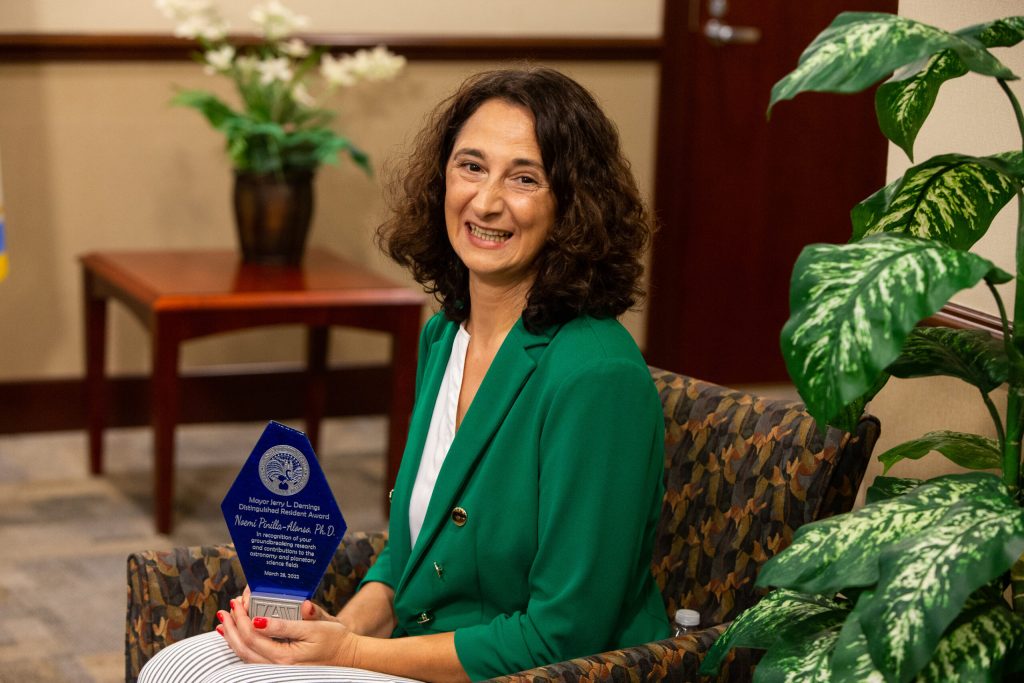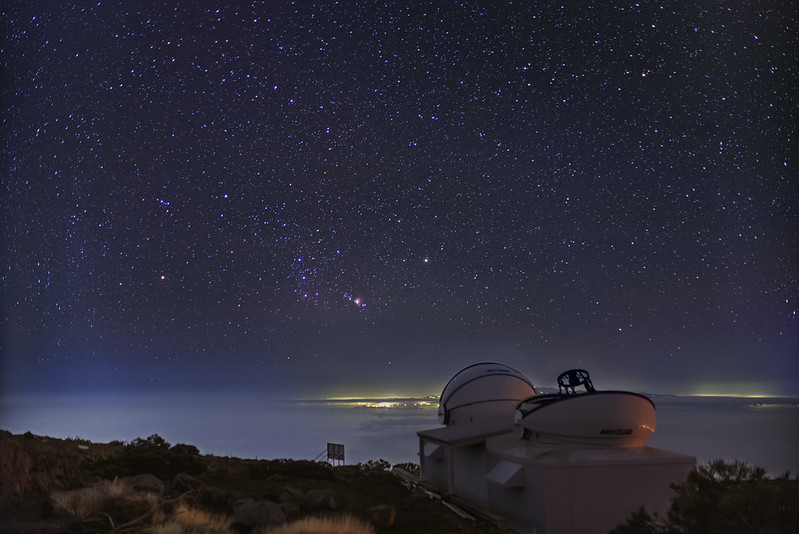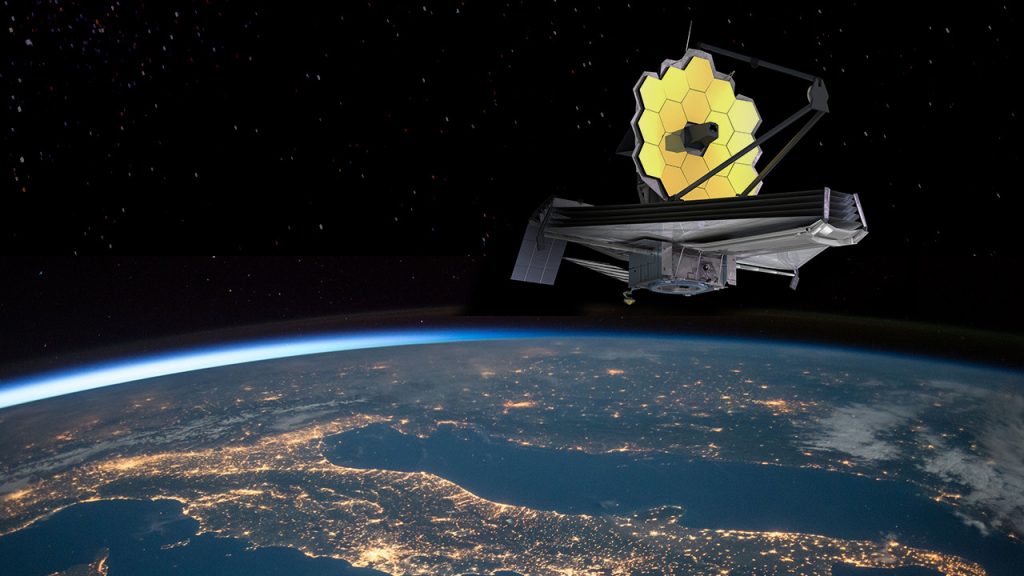Noemí Pinilla-Alonso was the scientific director of the legendary radiotelescope until it collapsed in 2020. Now she’s using the TTT to cross-check Arecibo’s data on radar astronomy.

Noemí Pinilla-Alonso, currently a researcher at the Instituto de Ciencias y Tecnologías Espaciales de Asturias (University of Oviedo), is a leading expert in the study of minor bodies in the solar system, especially trans-Neptunian objects. Her work focuses on the characterization of asteroids, comets, and trans-Neptunian objects. Her scientific journey has always maintained a strong connection to the Canary Islands: it was there, at the telescopes of the Instituto de Astrofísica de Canarias (IAC), where she got her PhD and began her hands-on exploration of the cosmos. After an international career that has included research at institutions such as NASA’s AMES Research Center, the Arecibo Observatory, or the Florida Space Institute, she now combines cutting-edge observations with the James Webb Space Telescope and renewed enthusiasm for the powerful capabilities of small, agile ground-based telescopes like the TTT.
In this interview, Pinilla-Alonso reflects on her scientific legacy, the importance of preserving and using Arecibo’s data, and the promise — and risk — of observing the cosmos with new tools.
Light Bridges: You’re currently taking a fresh look at Patroclus and Menoetius, Jupiter’s Trojan asteroids. Until now, they’ve been considered spherical, but your work starts treating them as ellipsoids. What are the implications of that for their own history and for our understanding of their surroundings?
Noemí Pinilla-Alonso: Astrophysicists are known among scientists for making big approximations: a star is a point source, an atmosphere is a set of parallel planes, an asteroid is a sphere—or maybe an ellipsoid. These are broad generalizations, simplifications of problems that, if we wanted to model them mathematically with precision, would be extremely complex.
Take the case of Patroclus and Menoetius. They are two asteroids, a binary object that orbits around the Sun following Jupiter. Just knowing that there are two of them is already significant, we believe there are many more multiple asteroid systems, but often we can’t even tell if we’re looking at one body, two, or more. The mutual events season is a unique opportunity to separate both components of this system.
What’s great about this system is that once every seven years, due to the configuration of their orbital plane, inclination, and the viewing angle from Earth, we get a window that allows us not only to distinguish between the two objects, but to witness a kind of cosmic dance where they pass in front of one another, partially eclipsing each other. This happens for months and can be predicted. We call this temporal window the season of mutual events.
“In a few years, around 2033, when NASA’s Lucy mission arrives at Patroclus and Menoetius, we’ll get confirmation—or not—of this hypothesis”
What does this mean? It means that if we observe them continuously during several events —which is something telescopes like TTT are great for, with their excellent temporal resolution and scheduling optimization—we can essentially trace the profile of the part passing in front of the other.
That’s when it becomes important to be more precise about shape. Saying they’re spheres is just a first approximation. But now we have enough data to say, “Let’s assume they’re ellipsoids instead,” which is much more realistic from a physical point of view—after all, not even Earth is a perfect sphere.
What’s happening is that these observations are letting us see that they’re not even perfect ellipsoids—which we might expect but can’t always confirm—because one of them has a “bite” taken out of its pole. That’s the most beautiful result from Patroclus and Menoetius, because we observed this during the last event, seven years ago, in a single light curve out of the seven or eight we captured. From that single curve, we said: “The only way to explain this is if there’s a crater at the South Pole.”
This year we’ve come back with much better temporal and magnitude precision thanks to TTT, and again, the results are consistent with that explanation. The most exciting part is that in a few years, around 2033, when NASA’s Lucy mission arrives at Patroclus and Menoetius, we’ll get confirmation—or not—of this hypothesis. We’ll see what happens. In many areas of astrophysics or astronomy, you don’t get that chance, but within the solar system you do—you can go visit the object and say, “Yep, we were right” or “Nope, not quite.”
This kind of feedback loop is fascinating. When Lucy gets there, the mission team will have your findings and can say: “In addition to everything else, let’s check whether these Spanish scientists were right about that crater,” and that could tell us something about the history of Patroclus—or extrapolate even further.
Exactly—and of Menoetius, too. And how this might apply to many other cases, other asteroids or bodies we’re studying.
When New Horizons visited Pluto and Charon, for example, it launched from Earth with the understanding that Pluto—then still called a planet—had a satellite, Charon. But it wasn’t a typical Earth–Moon system; Charon is quite large compared to Pluto. It’s more like a binary system. Back then, the smaller moons hadn’t yet been discovered—they came later with Hubble. So when the flyby happened, we got to see not just the big two, but several smaller ones. That suggested there could be even more tiny satellites that hadn’t been detected.
One of the main values of these observations is refining our understanding of the environments surrounding target bodies. If you don’t know that environment well, you’re putting your spacecraft at risk.
You’re also working on a project related to Arecibo and asteroid morphology. How does that fit in? Is it a separate initiative, or is it connected to the Patroclus-Menoetius study?
It’s all connected. But for example, Arecibo couldn’t observe a system like Patroclus-Menoetius—it didn’t have the radar power.
Arecibo—which, sadly, is no longer operational after the dome collapsed onto the main disk in 2020—used radar observations. It’s like “listening” to space: it would send a signal and collect the echo reflected from the object. Based on the transmitter’s power, you could reach nearer or farther targets.
It was excellent for observing near-Earth asteroids, which in recent decades have been of increasing interest, especially due to the rise of planetary defense programs. We know that asteroids periodically approach Earth and, while they may not directly threaten the planet, they can pose a risk to any spacecraft or satellites in cislunar orbit—like Earth-observing missions or communication satellites.

What Arecibo had—something TTT also excels at—is responsiveness. In 2019, in fact, we set a record for asteroid detections. We were even in talks about submitting it to the Guinness Book of World Records. The system was well-oiled: the team was excellent at responding to alerts from optical asteroid detection systems. They would notify the telescope director, and we had a predetermined priority for observing those objects. When possible, we’d point the telescope and start observations immediately.
This kind of radar observation lets us determine both the shape, the rotation state, and the orbit of an asteroid very accurately. And for the orbit and asteorids visiting the Earth’s neighbour, rapidness and precision is very important. We saw this last Winter with, 2024 YR4, an asteroid that had a potential impact risk with Earth, predicted for 2032, when detected. Optical survey observations alone aren’t very precise—you usually only get two or three data points from sky surveys, which leaves huge uncertainty. If we’d had Arecibo to observe it, the orbit would have been nailed down quickly. In its absence, various optical telescopes had to chip away at the uncertainty over time.
Each technique—optical or radar—has its strengths, but combining them is where the real power lies. In astrophysics, collaboration and integration are increasingly crucial.
So the idea is to use instruments like TTT to confirm or expand on what Arecibo once observed?
Collaboration looks a bit different now. In 2019, as I mentioned, we hit a detection record, but even so, Arecibo’s team was small—four or five people on site, plus collaborators focused on planetary defense. That team is still working together.
How do they continue, without a telescope? First, because there are other radars with similar (though smaller) capabilities—like NASA JPL’s Goldstone, which is part of the Deep Space Network.
And second, we now have massive datasets from Arecibo and from new optical systems like TTT. These are huge archives, and very few people in the world are equipped to analyze them properly—it takes specialized knowledge.
“We now have massive datasets from Arecibo and from new optical systems like TTT. These are huge archives, and very few people in the world are equipped to analyze them properly”
Our commitment to Arecibo is to exploit that legacy. We recently hosted a year-long workshop at the University of Oviedo. We began in early 2025, with an intensive week of training in Oviedo. Then we paired Arecibo and international planetary defense experts with students and postdocs eager to learn how to work with Arecibo and optical data. They’ll spend the year analyzing it and finish 2025 publishing the results.
It’s the first initiative of its kind. And with some luck, hard work from the students (and maybe help from the muses), we hope to publish five or six papers on specific objects—measuring shapes, orbits, and more. For example, one of my PhD students is working on a triple system—three bodies orbiting their shared center of mass.
We want to truly exploit Arecibo’s legacy—open its data to the community, train new scientists to use them, and ensure Arecibo continues to have scientific impact even five years after the antenna collapsed. These are the lessons learned that TTT and other telescopes can take from Arecibo—and vice versa.
Is there any interest in rebuilding Arecibo, or using the expertise to build something new elsewhere?
It’s a bittersweet topic. The Arecibo user community is very large and vibrant. Arecibo served three major communities: astrophysics (including Nobel-winning work like the first exoplanet discovery), atmospheric science, and planetary defense.
These were experienced, engaged users—some had been with Arecibo since the 1960s. The NSF (National Science Foundation) would rotate new administrators every 4 to 8 years—often newcomers—who’d say, “Let’s do this, let’s try that.” And the community would say, “Okay, let’s tell you how this place really works.” It was a true community effort.
The user community continues to submit proposals to resurrect certain Arecibo components—not the main dish, and not the “mega-project” we ourselves proposed. That proposal—backed by major international support—was for a New Generation Arecibo Telescope (NGAT), something just as groundbreaking as the original was in its day. We knew that rebuilding 1960s Arecibo wasn’t enough. We needed to innovate.
But for whatever reason, the NSF decided to shut down the scientific facility and keep only the educational one—against our recommendations. We believe the educational outreach was so powerful precisely because it was backed by real science. Still, the educational team is doing excellent work and is very committed.
Tell us about your experience with new observing models like the one at TTT. Other scientists say it allows them to explore interesting—but risky—projects that would never pass in more conventional systems.
I think there are two big advantages to TTT. One is flexibility in scheduling observations.
The other is the passion of the people running it. Of course, scientists and managers at other observatories—like GTC or JWST—are also passionate, but I’ve sat on many telescope committees, and often you’re asked: “Is this risky? What’s the payoff?” It’s always a double-edged sword: big risk, big reward. But each telescope can only afford a certain amount of risk. These are expensive facilities, highly competitive, and represent major institutions.

So having managers as enthusiastic about science as the ones at TTT really benefits us. They don’t shy away from high-risk proposals—they go for it. And that’s a defining trait.
And how about its resolution or technical capabilities?
Honestly, I had outgrown all the ground-based telescopes I’d used. These days I mostly observe with the Webb. I used to think, “If I have this monster space telescope, why bother with ground-based ones? I’ll come back to them eventually.” Because, as scientists, every answer gives rise to five new questions—some of which can’t be answered until the right technology comes along.
What surprised me about TTT is… well, it’s just an 80 cm telescope. My first observing run, back in 1995, was with the IAC 80, and even then it was considered small. I thought, “What am I going to do now with 80 cm?”
But then you add cutting-edge CMOS sensors, fast readout speeds, robotic operations… put all that together, and you sometimes forget it’s only 80 cm, because it’s so powerful. They’ve created a well-oiled, highly efficient instrument.
I know it’s not your primary field, but just a few days ago, Webb made its first direct imaging of an exoplanet. I imagine this opens up a whole new era.
Absolutely. There are paragraphs we write in proposals almost by default—things like “small bodies in the solar system are the remnants of solar system formation… building blocks that help us understand…” You’ve probably read that a thousand times. We also say, “Understanding our own solar system helps us understand others.” These are 100% true, but they start to feel like clichés—until something like Webb comes along and actually starts building those metaphorical bridges. That’s what we’re seeing now. And I’m convinced it’s happening with Webb.

For example, yes—we’ve directly imaged an exoplanet. But beyond that, we’re detecting volatile gases in protoplanetary disks. These volatiles are key: in early planetary system formation, there’s a phase when giant planets form, then the gas dissipates, and rocky planets form. But ices—like those in the small bodies I study—sublimate and escape in some disk regions. Now, we’re detecting those escaping gases.
I was part of a May publication on the first detection of water ice in a debris disk, a disk filled with planetesimals, asteroids, and comets still forming. We detected that ice with Webb’s spectra, and we know it’s coming from objects like the ones I study in our Solar system—colliding and evolving.
So those theoretical intermediate steps we’ve long described? We’re witnessing them for the first time. That’s what I mean: Webb is laying the bricks to connect fields that we’ve always known are related, but have studied separately.
As the saying goes, “If you have a hammer, everything looks like a nail.”
Well, now we’re finally seeing the nails.


